 WHAT TO SEE WHAT TO SEE |
 Arch 22 Arch 22 |
Arch 22, the massive gateway on July 22 Drive, was built to celebrate the military coup of 22 July 1994 led by Lt Yahya Jammeh, now Gambia's President.
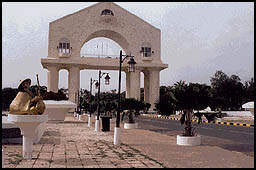
The Arch consists of a triangular roof and balcony, which sits atop eight massive columns and, at 35 m high; it's by far the tallest building in Gambia.
It was designed by Senegalese architect Pierre Goudiaby, who was also responsible for Banjul international airport, and various grand public buildings in other parts of Africa.
The balcony is open to the public, and provides excellent views over the city of Banjul and the coast. There's also a coffee shop and a small museum. On the western side of the Arch is an enormous statue of a soldier carrying a child in his arms, presumably symbolising the small Gambia nation safe and secure in the arms of the military.
 Mungo Park Memorial Mungo Park Memorial |
Historians of exploration may want to head for Karantaba Tenda, about 20 km directly due easy of Georgetown. Near this village, on the riverbank, is the memorial pillar marking the spot where the Scottish explorer Mungo Park set off into the interior to trace the course of the Niger River
 ARTS, CRAFTS & MARKETS ARTS, CRAFTS & MARKETS |
The markets in Gambia are vibrant, colourful and always fascinating - well worth a visit even if you do not want to buy anything. In fact, they can be even more entertaining if you do not want to buy anything, as then you can just walk around and enjoy the spectacle without having to worry about prices or making tricky decisions.
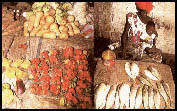

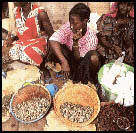
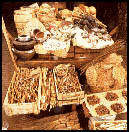
There are two main sorts of market. The first is where local people come to buy and sell everyday things such as fruit and vegetables, or other items like clothes and farm tools. In large places, you'll see stalls selling radios, cassette players and other electrical goods, imported shoes, hardware or second-hand car parts. Te second type of market is aimed more at tourists, where art and craft items (like those outlined earlier under shopping) are sold; these places are often called the 'craft market'. In some places the locals' main market and the tourist-orientated craft market are in the same place, and these can be the most interesting to visit.
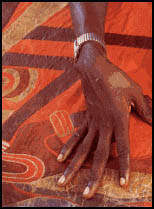 |
The largest markets are in the capital and large towns such as Banjul, Serrekunda, but the markets in smaller places are also well worth a visit. In rural areas, near the borders of Gambia, many villages hold a weekly market called a lumo. Some of these are major events, attracting traders and customers from the surrounding area, and from neighbouring countries.
 Abuko Nature Reserve (Western Gambia) Abuko Nature Reserve (Western Gambia) |
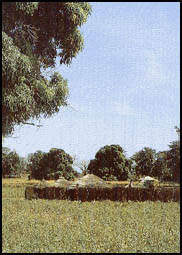
This 105 hectare reserve is Gambia's oldest protected area. It is near the holiday resorts on the Atlantic Coast and is visited regularly by tourists. The reserve protects a large tract of gallery forest, and is particularly noted for its bird and monkey populations.
 Baobolong Westland Reserve (Central and Eastern Gambia). Baobolong Westland Reserve (Central and Eastern Gambia). |
This reserve (22,000 hectares) is on the northern bank of the River Gambia, opposite Kiang West, and stretches inland to the Senegal border, although it has yet to be fully gazetted. It is most easily reached from Tendaba, on the southern bank. This wetland was designated as Gambia's first Ramsar site (the convention on wetlands of international importance).
 Kiang West National Park (Central and Eastern Gambia) Kiang West National Park (Central and Eastern Gambia) |
This park (11,000 hectares) is on the southern bank of the river Gambia, and is dominated by dry woodland vegetation, with areas of mangrove and mud flat; it is most easily reached from Tendaba.
 River Gambia National Park (Central and Eastern Gambia) River Gambia National Park (Central and Eastern Gambia) |
More commonly known as Baboon Islands, this 580 hectare park covers five mid-river islands near Georgetown, and was established mainly as a rehabilitation sanctuary for chimpanzees. Visitors are not permitted to enter the park.
 Niumi National Park (Western Gambia) Niumi National Park (Western Gambia) |
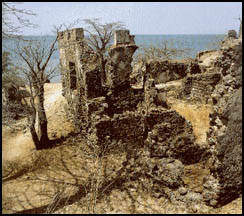
This park (approximately 5000 hectares) is in the northwest of the country, contiguous with the Parc National du Delta du Saloum in neighbouring Senegal, and incorporates the costal islands of Ginak. It has areas of dry woodland, sand dunes, mangrove, salt marsh and lagoons.
 Tanji Bird Reserve (Western Gambia) Tanji Bird Reserve (Western Gambia) |
This reserve (612 hectares) is on the coast, south of the Atlantic Coast resorts area. It includes areas of dunes, lagoons, mangrove, dry woodland and coastal scrub, plus a section of the Tanji River and the offshore Bijol Islands.
 Bijilo Forest Park (Atlantic Coast Resort and Serrekunda) Bijilo Forest Park (Atlantic Coast Resort and Serrekunda) |
This park (51 hectares) is one of several forest parks in Gambia, but it is unusual in that it is not conserved for its potential as a renewable timber source but is primarily a nature reserve. Bijilo is near the resort of Kololi and is easy to reach form the other Atlantic Coast resorts.
Soon to join the list of parks and reserves is the Tanbi Wetland Complex (around 6000 hectares), incorporating the coastal strip and mangrove swamp from Banjul to Cape Point and south along the river to Lamin and Mandinari Point. It is currently designated as a Ramsar site. |

